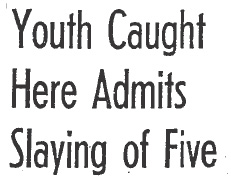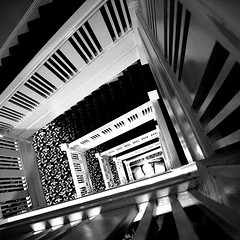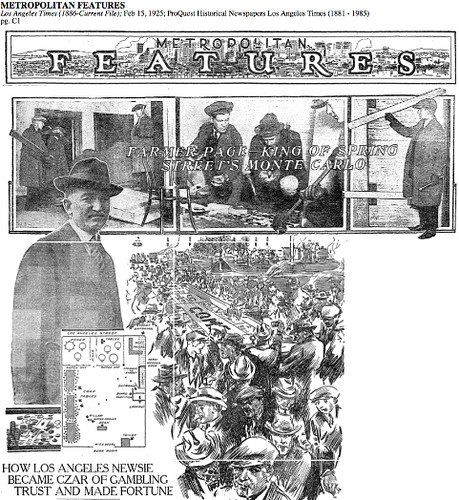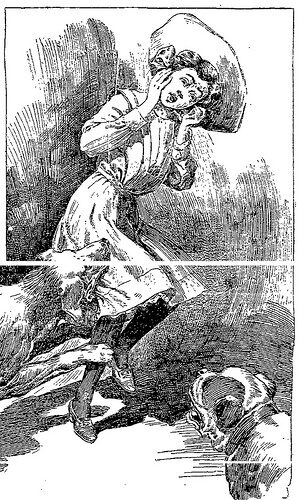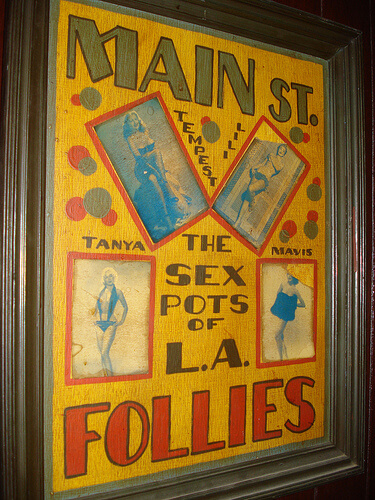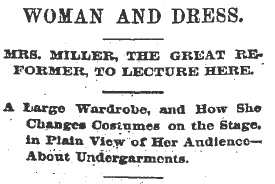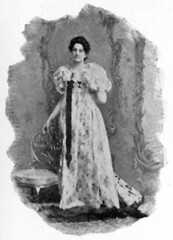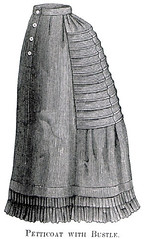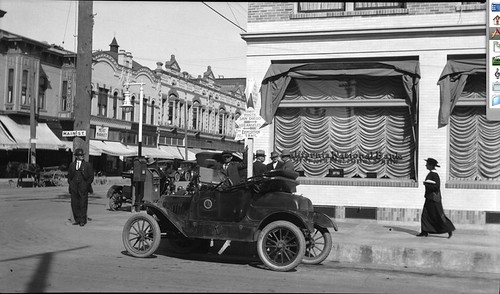
Main Street, 1916
Photo Credit: USC Digital Archives
Sometime after midnight on January 29th, 1915, Anna “Diamond Tooth” Baker and Mrs. Louise Baker were arrested in a rooming house at 652 1/2 South Main Street. The sisters were among 54 women apprehended by police that night as the department pursued a wholesale clamp down on vice in the downtown area, authorized by the recently passed Red Light Abatement Act. The Act aimed at stemming prostitution by targeting the real estate used for this purpose, as well as property owners, property managers, and renters. As a result of this legislation, landlords would often refuse to rent to single women. In some cases, single women were prohibited from owning property at all in downtown neighborhoods of American cities.
On January 29th, police raided forty houses. They posted plainclothesmen at all exits to the houses, while officers rushed in and detained anyone within the premises for questioning. The bookings broke all records in the female department in City Jail. Many of the women were forced to stand in the halls until more cells were converted for female use.
At a hearing on March 27th of that year, a temporary restraining order was issued against Louise Baker, the proprietor of the rooming house on South Spring, forbidding her from conducting business there on the grounds that the house was being used for immoral purposes. When the landlord and property owner of 652 1â„2 South Main, who were also facing charges, claimed they had no knowledge of Mrs. Baker’s activities, the prosecution presented depositions from three police officers which called their statements into question. The officers testified that Mrs. Baker’s “resort” was one of the most notorious of its kind in Los Angeles, and alleged that Mrs. Baker boasted to them that she had “cleaned up more than $40,000 in Los Angeles” and that she would “use that amount to fight the police force, if necessary.”
This was not the first time Mrs. Baker’s words were used against her in court. In October of the previous year, Louise Baker was cited in contempt of court for talking too much. “Unable to stem her voluble flow of language”, the judge told her “to talk to the bars.” She was sentenced to a day in jail, but as her trial concluded at 4 pm and the prison workday ended at 5, she was able to fulfill her sentence in one hour. As it happens, Mrs. Baker was in court to accuse Lou Haufbine, a furniture salesman, of disturbing the peace. Although Haufbine was found guilty, he received a suspended sentence, while Mrs. Baker was marched off to jail. After serving 60 minutes worth of hard time, Mrs. Baker apologized to the court. “I wanted to be heard,” she said. “I guess I talked too much.”
Her sister, Anna “Diamond Tooth” Baker, known for the half-carat diamond she wore in a front tooth, generally faired better in court. Prior to her arrest in 1915 she was acquitted of several charges of conducting a house of ill repute at nearby 610 1/2 Spring Street. Each time Anna requested a jury trial, and each time jurors found her innocent, declaring that she couldn’t possibly be as bad as she was represented to be. On one occasion, however, Miss Baker was unable to make an appearance at court on the designated day, and called Police Judge Chambers to request he change the date. Judge Chambers told her that his court “had not been so modernized that its sessions were held over the telephone, and unless she put in appearance her bail of $200 would be forfeited.” After Anna failed to appear, the judge issued a bench warrant, and raised the bail to $500. Louise came to her sister’s aid, and, “after expressing her indignation,” (we can only assume at great length) bought her sister’s freedom with a large pile of silver dollars, gold coins, and greenbacks. Anna, apparently equally as voluble as her sister, commented to reporters that she could buy automobiles, so why should she not purchase her own liberty when it cost a mere 500 clams?
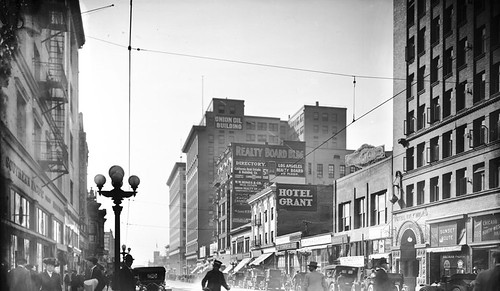
Spring Street looking South from 6th, circa 1915
Photo credit: USC Digital Archive


